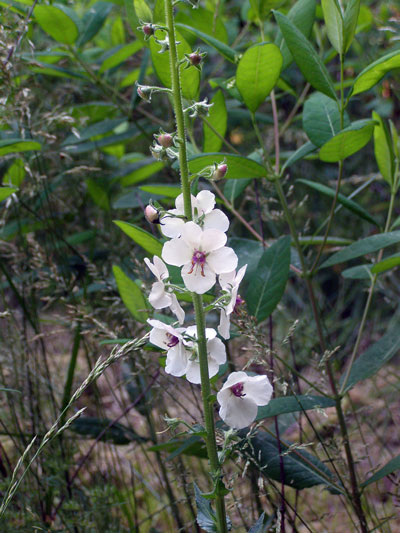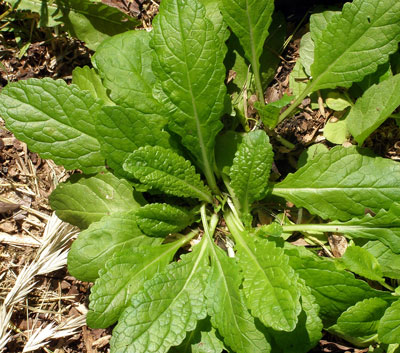With luck, you’ll spot a yellow one
By Ken Moore
Flora Columnist
During the past week, I’ve been catching glimpses of little white flowers hovering just above the tops of grasses in rural areas outside Carrboro and in some of the unmowed roadside edges closer into town.
I’m particularly aware of them because I remember discovering a few some years ago in my infrequently mowed yard.
Most plants of moth mullein, Verbascum blattaria, are white-flowered, or at least that’s been my experience in observing them for more than 30 years. Whenever I see a yellow-flowering one, I always linger to enjoy, for me, a rare occurrence.
Earlier this spring, I spied a characteristic flat, round rosette of coarsely margined, deeply veined leaves at the end of my gravel driveway. Not having spotted any in the tall grasses of my yard yet this year, I took great care to avoid driving over this single plant.
Just this past week, I was pleasantly surprised to discover that it is a yellow-flowered specimen, and several of the more common white-flowered ones are beginning to express themselves above the grasses out in the yard.
Each flower opens for only a single day. The descriptive species name, blattaria, “moth-like,†is attributed to Roman naturalist Pliny the Elder’s description of the similarity of the flower’s hairy stamens to antennae on the heads of moths.
The flower is definitely worth a “closer look,†and you don’t need your trusty hand lens to see the beautiful purple-haired stamens crowned with vivid orange anthers. You can almost imagine some amorous moth approaching one of these flowers with more than food on its mind.
Bumblebees are frequently seen wrestling with the moth antenna-like stamens as they forage for the pollen. They must be effective pollinators, because the stems eventually display numerous round capsules holding countless seeds for dispersal later in the season.
In contrast to the common wooly mullein,Verbascum thapsus, with its large woolly leaved, cabbage-like basal rosette, the smaller moth mullein generally goes unnoticed. The basal leaf cluster of moth mullein hunkers flat on the ground like a pancake-sized, shiny, dark-green doily. You may notice the flat leaf rosettes in late fall and winter when the ground is more exposed to view. If you are lucky enough to spot some in your yard, mow around them to watch them flower next season.
Both mulleins are naturalized in open, sunny sites, having made their way across the Atlantic long ago with the settlers from Europe. Though in some states mulleins are considered invasive, they don’t pose a problem in North Carolina. The beautiful flowered moth mullein is hardly noticed as it struggles to compete with the lush, perennial vegetation of our open areas.
These plants will be in flower for the next couple of weeks, so keep a lookout for yellow ones.
Email Ken Moore at flora@carrborocitizen.com.
Find previous Ken Moore Citizen columns at The Annotated Flora.

PHOTO BY KEN MOORE. Moth mulleins, most often white-flowered, occasionally show up in unmowed fields.
Comments are closed.




Under UV light, wavelengths visible to bees are reflected by the pollen and anthers making bright targets against the dark UV absorbing background. Notice the movement of floral parts. The two bottom anthers stick out beyond the stigma initially, but then they bend out of the way exposing UV reflecting filaments and when bees try to reach these targets they make contact with the stigma. The flower rewards b-bees first, then deceives them a bit.
Is this the Ken Moore that I knew at UNC?Jim Cooper